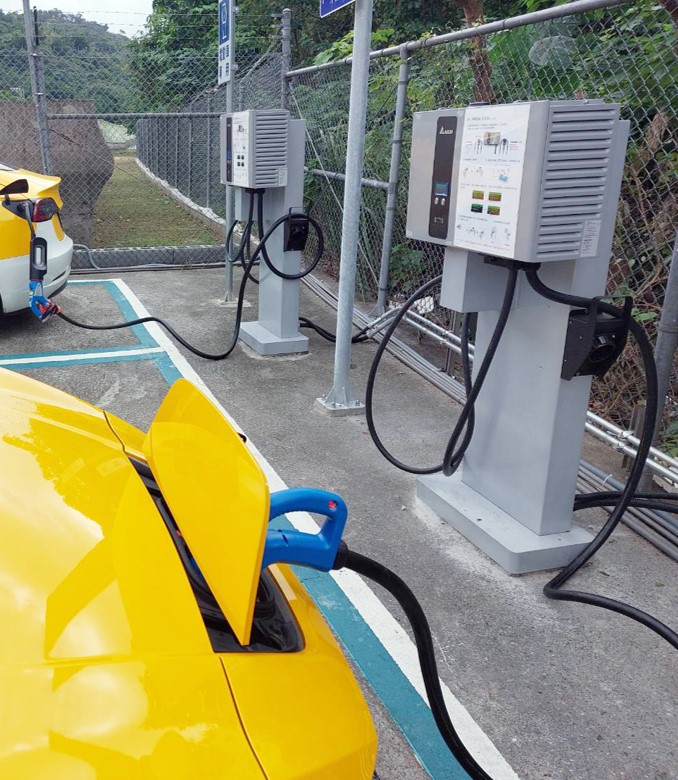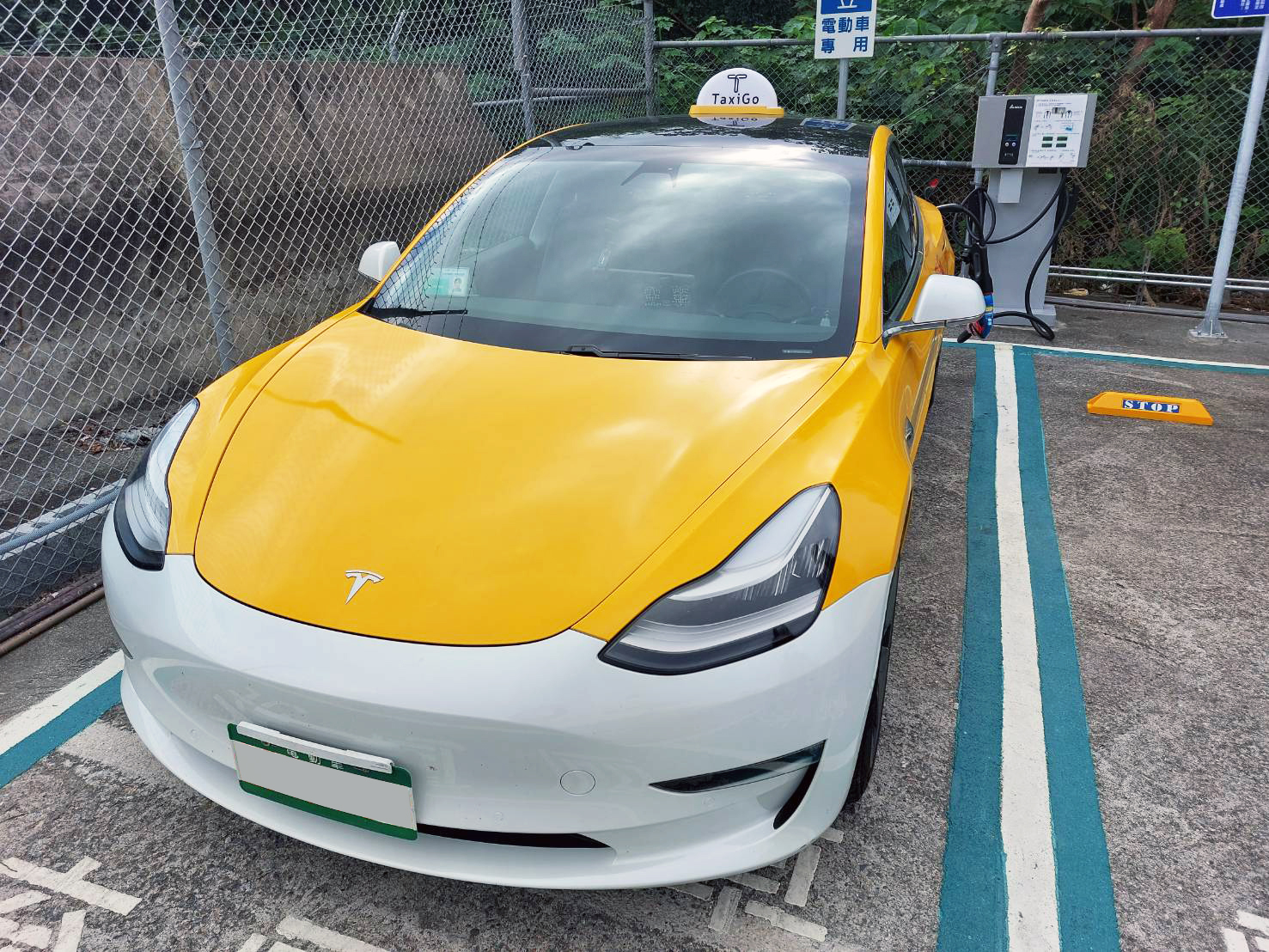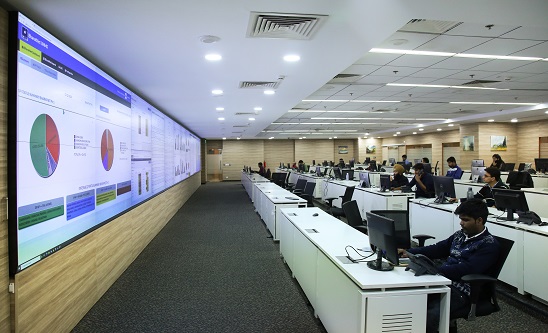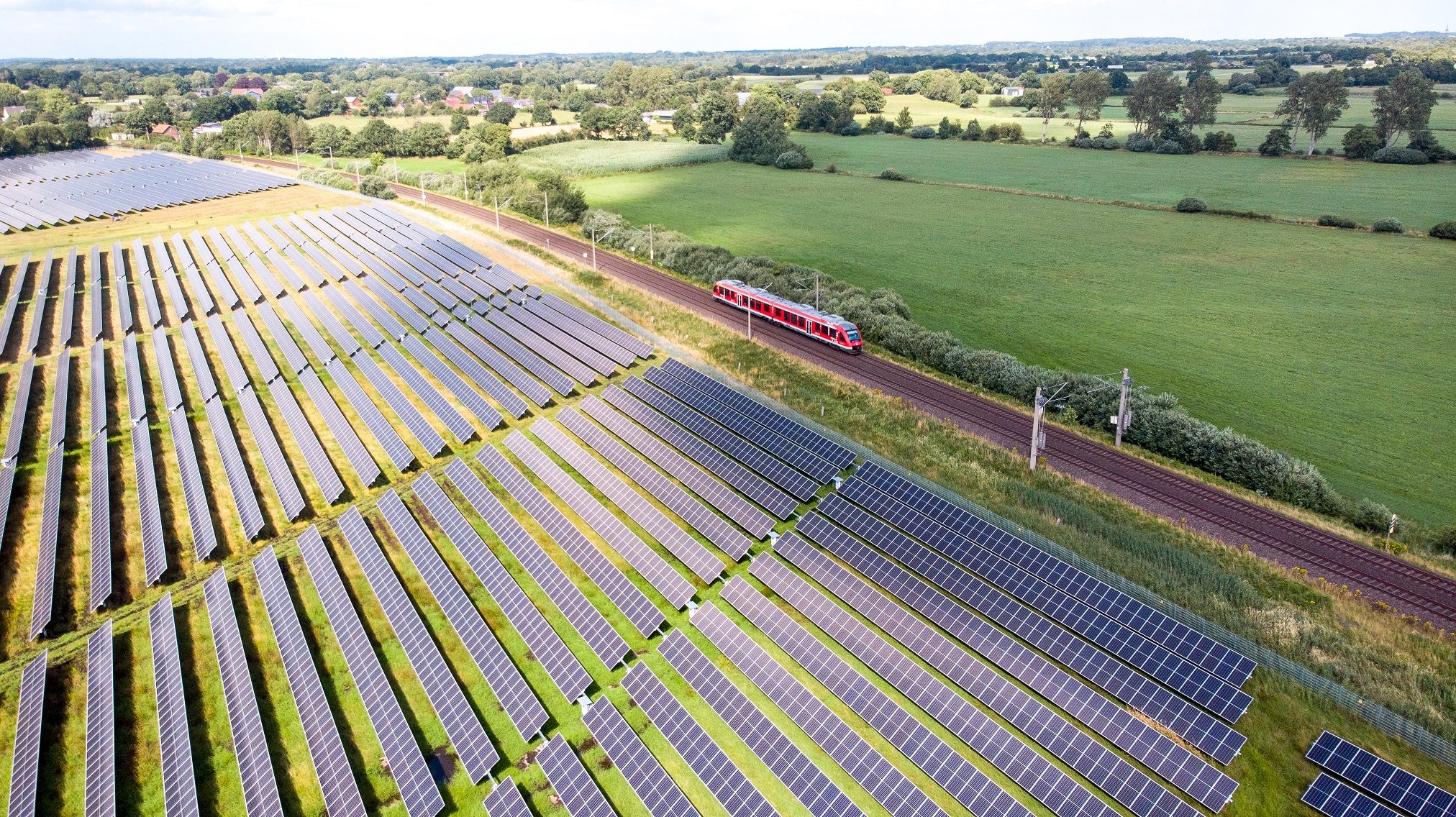Transition to electric transportation has become one of the hottest topic in recent years. With higher demand for electric vehicle (EV) charging among taxi fleets than average vehicle owners in metropolitan areas, acquisition cost, maintenance cost, and convenience of charging will become key factors influencing fleet operators' decision to purchase EVs. The Public Transportation Office (PTO), Taipei City Government has set up five taxi service stations in the city. There are several elements involved in the installation of a charging
station as listed below:
1.Charging piles compatible with the charging specifications of mainstream EVs
2.Charging efficiency
3.Charging management
Delta's distribution partner has built the first charging station for taxi fleets in Taipei City at Dazhi Taxi Service Station, which can serve around 140 EV cab drivers in the city. Delta encourages the transition to EV fleets from commercial vehicles with the construction of charging demonstration stations and subsequent expansion plans, so as to reduce vehicle emissions in the city, thereby moving towards a clean, eco-friendly, and low-carbon city.
DeltaGrid®EV - Delta's charging infrastructure management system
The two charging piles at Dazhi Taxi Service Station are equipped with a built-in OCPP communication interface that connects to DeltaGrid®EV, Delta's very own charging infrastructure management system. The information and data of charging history and fees for each charging pile are sent back to this management system for monitoring and recording so that the station manager can know which charging pile is in use, how long it has been in use, and how much it has spent on electricity. Data-based electricity information enables managers to collect and analyze electricity consumption records, with a view to improving the efficient use of charging piles. With DeltaGrid®EV, charging rates can be set and adjusted flexibly according to attributes such as electricity cost, peak and off-peak electricity tariffs, designated dates, and member groups. Billing methods are also adjustable and controllable via this system, making fee collection at
charging stations easier and more convenient. Furthermore, this system is also equipped with the current limiting function in conjunction with Taipower's time-of-use electricity tariffs, where upper charging limits are set during high-tariff hours to avoid overloading and overuse. This function encourages EV owners to charge their vehicles during low-tariff hours, avoid doing so during peak electricity times, and develop the habit of charging their vehicles at staggered hours, thereby demonstrating a series of benefits such as achieving stable electricity consumption and reducing electricity costs.


Delta EV charging solution is introduced in the 1st Taxi charging station















